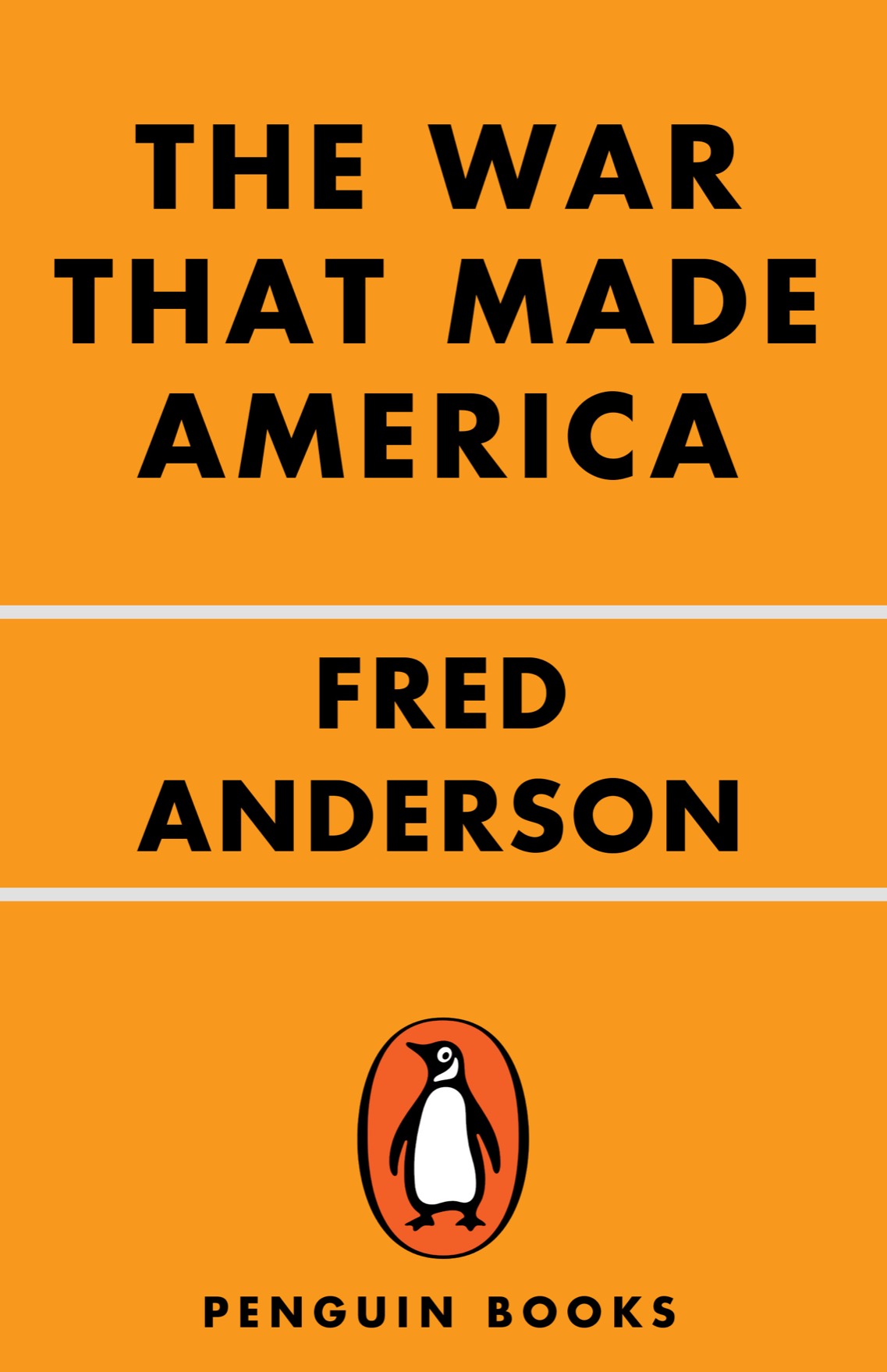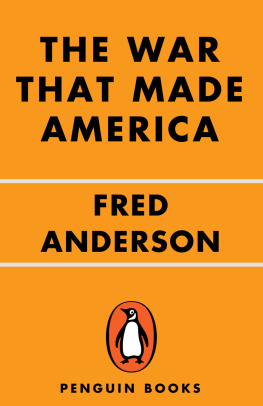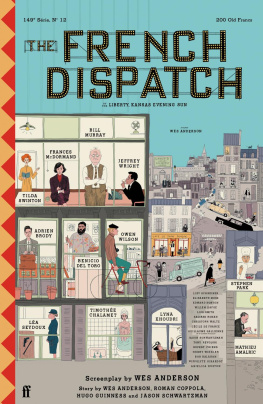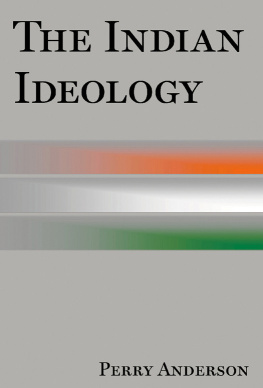Table of Contents
ALSO BY FRED ANDERSON
A Peoples Army:
Massachusetts Soldiers and Society in the Seven Years War
Crucible of War:
The Seven Years War and the Fate of Empire in British North America 1754-1766
with Andrew Cayton
The Dominion of War:
Empire and Liberty in North America 1500-2000
To some gaffers in Fort Collins
Preface
Today, two hundred and fifty years after the French and Indian War, most Americans are no more familiar with its events and significance than they are with those of the Peloponnesian War. Few know that George Washington struck the first spark of a war that set the British North American frontier ablaze from the Carolinas to Nova Scotia, then spread to Europe, Canada, the Caribbean, West Africa, India, and, finally, the Philippines. Historians call this immense conflict the Seven Years War; with great justice and characteristic vigor, Winston Churchill described it as the first world war. It overthrew what had been stable balances of power in both Europe and North America and helped to foster a secessionist rebellion in Britains North American colonies. That the man who triggered the war by trying to project British power into the heart of the continent should have gone on to lead an American revolutionary army and then to serve as the first president of the United States is surely one of the greater ironies in a national history that abounds in them.
This book, and the television series it accompanies, tells the tale of the little-known war that helped to shape George Washington into a man capable of playing the role he ultimately did in American history. But Washington is only a part of the story. In bringing to an end the French empire in North America, the French and Indian War undermined, and ultimately destroyed, the ability of native peoples to resist the expansion of Anglo-American settlement. The wars violence and brutality, moreover, encouraged whitesparticularly those on the frontierto hate Indians with undiscriminating fury. In the prewar world of competing empires, Indian-hating had of course been far from unknown. Yet it had never been so indiscriminate, if only because backwoods settlers knew that their survival could easily hinge upon making accurate distinctions between friendly and hostile groups. The widespread Indian-hating that the French and Indian War engendered would be reinforced by the War of Independence and contribute to the formation of American cultural identity, sanctioning the removal or annihilation of native peoples as necessary to the advance of civilization.
In that sense the story that this book tells is not merely of the French and Indian War as a prelude to the American Revolution with which we are familiarthe struggle for liberty against oppression, rights against power, independence against subjugation. It is a darker story than that: one in which imperial ambitions produce unpredictable, violent results; in which victory breeds unanticipated disasters for the victor; in which the evidently benign growth of a population of peaceable farmers leads to the wholesale destruction of native peoples. This one is as much a part of American history as the brighter, more familiar, more comfortable story of rights defended and liberty maintained, which is the usual way we think of the birth of our Republic. That both stories meet in the person of George Washington is a fact worth remembering as we seek to understand the causes, character, and consequences of a war no one wanted, but which nonetheless transformed the colonists world forever. It is not too much to call it the war that made America.
Prologue: New York, July 1776
Worse times lay aheadfar worsebut George Washington did not know that on July 20, 1776, when he finally found time to answer the letter his old comrade Adam Stephen had written more than two weeks earlier. Ordinarily the general, a punctual correspondent, would have replied more quickly to the man who had once been his second-in-command of the Virginia Regiment, and who was now a colonel in the Continental Army. But the last few months, and the last few weeks in particular, had been a time that tried Washingtons soul as severely as any since the war began. Lately he had barely had time to perform his official duties, much less attend to his private correspondence.
Washington had arrived in New York on April 13 as a herothe most famous man in North America, and perhaps in the English-speaking world. In the summer of 1775 he had taken command of the Continental Army and directed its first great sustained operation against the British, the Siege of Boston, to a successful conclusion. Impatient of the celebrations and ceremonies that followed, he had lingered only a week after the British abandoned the city in March, before moving his headquarters to New York. There, as he knew only too well, a magnificent harbor, central location, and water access to the interior via the Hudson River would give his adversary, General William Howe, an ideal base of operations. Since no one knew when the enemy might appear, Washington had set to work immediately to prepare New Yorks defenses.
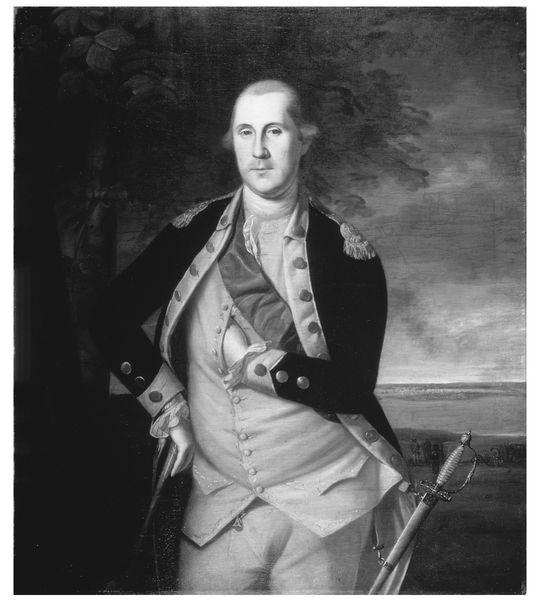
George Washington,by Charles Willson Peale, 1776.John Hancock commissioned this portrait during Washingtons brief visit to Philadelphia in May 1776 to confer with Congress regarding the defense of New York. Peale, who four years earlier had commemorated Washingtons French and Indian War service in another portrait, now included in the background an image of Boston, recently evacuated by the British army. (Brooklyn Museum)
Nothing had gone smoothly or well. The complex topography of river, harbor, and islands made the area around the city of New York hard to defend, and the thousands of men whom Washington needed to build fortifications had been slow to arrive. As usual, discipline had been a problem, especially among the militiamen on whom he had to rely for much of his manpower. He had been plagued, as always, by shortages of arms and supplies. With the ceaseless application of energy and effort, matters had gradually improved through May and June. But on June 22, just as things were looking up, a nest of Loyalist conspirators had been uncovered. The organization, which allegedly included (among others) the mayor of New York City and eight Continental soldiers, had been passing large quantities of counterfeit currency, provided by British agents who hoped to undercut public confidence in the Continental Congresss paper money. Two of the suspected soldiers, in jail, were overheard to speak of a plot to assassinate Washington and raise an insurrection at the moment British invasion forces arrived. Both men were members of Washingtons personal guard.
Washington ordered one of the men, Thomas Hickey, to be tried by court-martial on the twenty-sixth. The court found him guilty and condemned him to die. Perhaps twenty thousand soldiers and civilians turned out on June 28 to watch Hickey swing from the gallows on Bowery Lane. The next day they watched an even more dramatic spectacle unfold as more than a hundred Royal Navy warships and transports sailed into the lower harbor and anchored off Sandy Hook.
As Washingtons men worked feverishly to complete their fortifications, dispatches arrived from Canada reporting that the Continental expeditionary force (which had seized Montreal the previous year but had suffered heavily from desertion and smallpox) had been defeated with heavy losses. Abandoning the Saint Lawrence Valley, the Continentals were in retreat toward Lake Champlain, where they hoped to regroup at Crown Point in time to resist an expected invasion. Washington sent a trusted subordinate north to prevent the collapse of the army, but in reality he could do even less in that distant quarter than he could in Manhattan. On July 3 he watched helplessly as thousands of redcoats disembarked on Staten Island, which they fortified to receive the reinforcements who were soon to follow. By the twelfth another 150 sail of naval vessels and transports had arrived, bearing fifteen thousand more troops. This brought Howes strength up to about twenty-five thousand men, almost twice the number under Washingtons command. No one needed to tell him that they were also far better trained, equipped, and supplied than his own raw troops.
